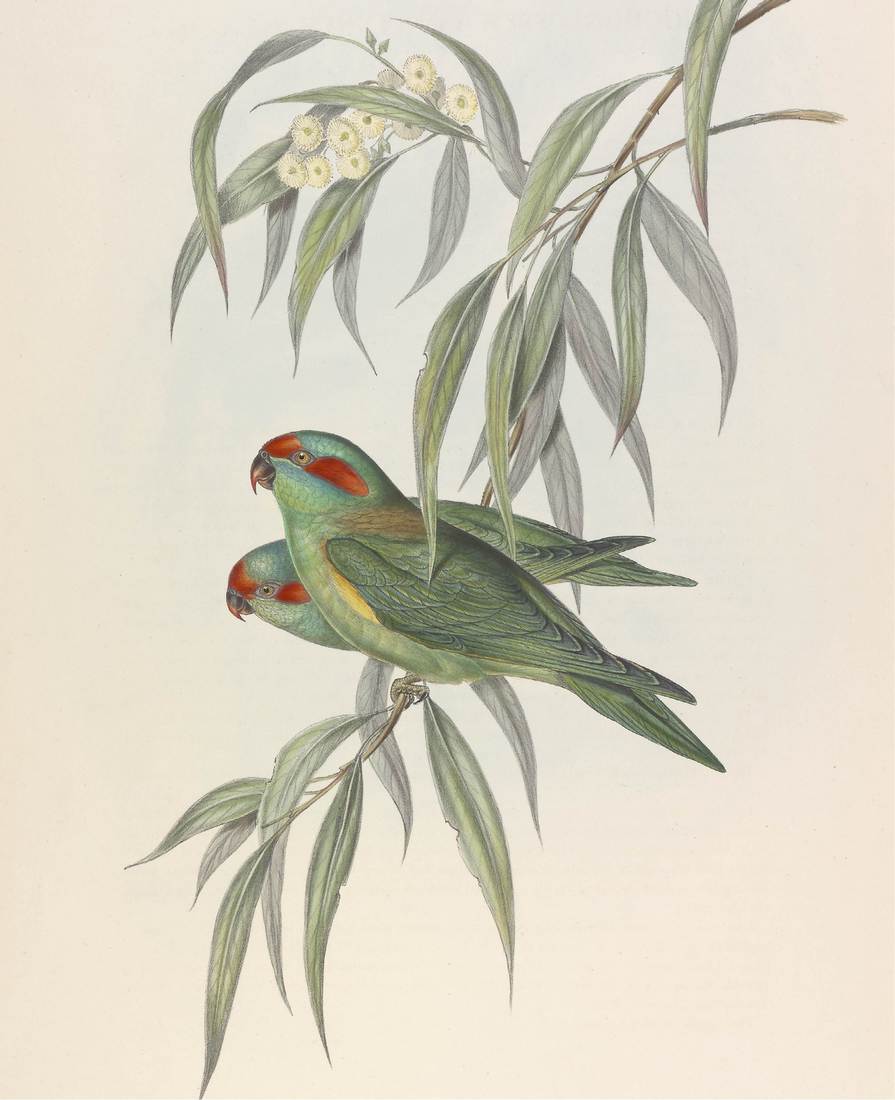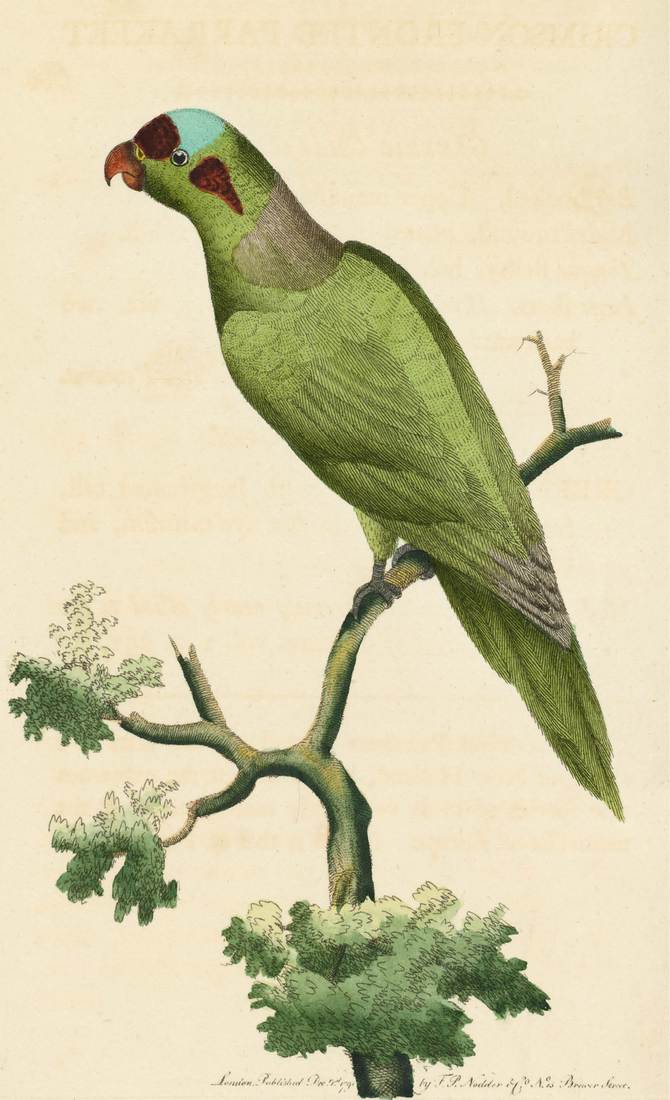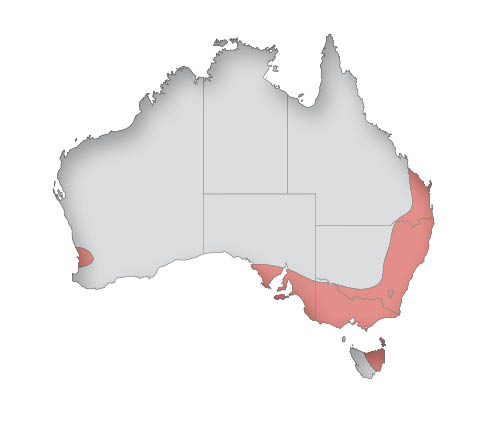Musk Lorikeet
Glossopsitta concinna
George Shaw was the first to describe the species, in 1791.
Glossopsitta combines the Greek glossa (tongue) with psitta (parrot); concinna means neat, a reference to the compact form of the bird.

John Hunter, Gorail between 1788 and 1790
Author’s note: Hunter’s illustration is the first known of the species.

Unknown artist c. 1795
Author’s note: The often-used term ‘painted from Nature’ did not mean what it does now. Most of the earliest illustrations of Australian parrots were made by European artists from skins or from stuffed and mounted specimens. Hence, any attempts at animation and depiction of Australian vegetation were drawn from the artist’s imagination.

John Gould (artist), Henry Constantine Richter (lithographer), Trichoglossus concinnus (Musky Lorikeet) 1848 (two adults; sexes similar)
Author’s note: Early nineteenth-century collector George Caley, who was based in Parramatta, New South Wales, gave the Musk Lorikeet’s Aboriginal name as Coolich. He noted that ‘its breath, or some part of its head emits a very sweet odour’, hence its common name, Musk Lorikeet.

Frederick Polydore Nodder, Crimson-fronted Parrakeet
(Psittacus concinnus) 1791
Author’s note: Nodder’s illustration is the first published of the species.





